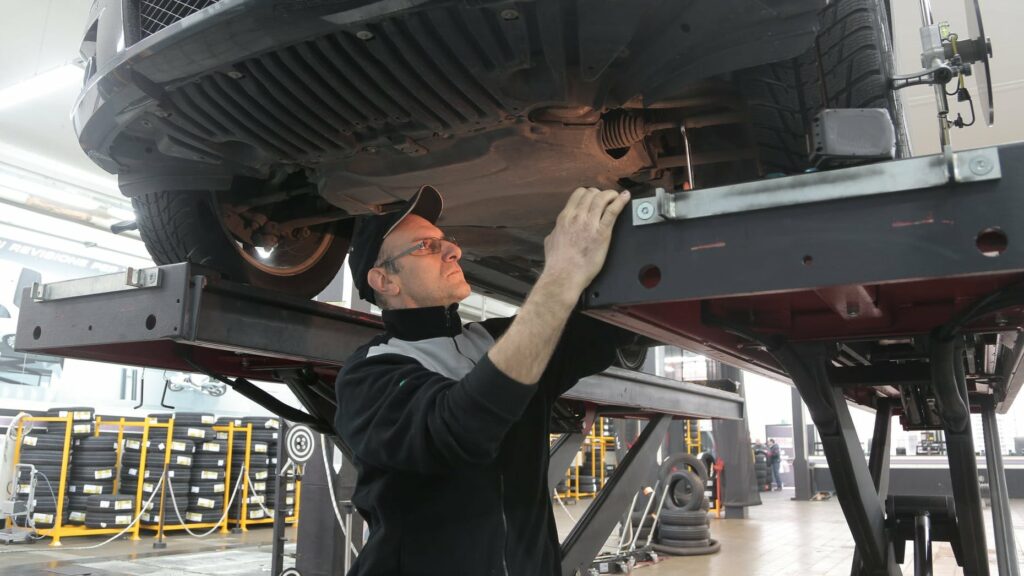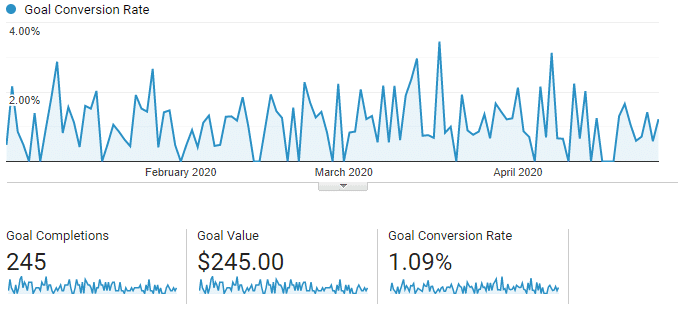
Automotive SEO: Your Best Marketing Tool
The automotive industry is blessed with a loyal customer base. Once you give them great service, they’re going to tell their friends, and most importantly, they’re going to keep coming back. But they need to find you first. One way to accelerate this process is with the help of effective SEO.
Whether you’re a dealership, a manufacturer, a distributor of aftermarket parts, or a garage, optimizing your website will go a long mile. If you do it right, you’ll have more incoming leads and more people learning about your business every day.
In this guide, you’ll learn everything you need to know about automotive SEO and increasing your online visibility.
Make an Impact With SEO
Ranking on Google’s 1st page without the help of SEO is difficult, time-consuming and expensive. You could pay for a spot there but your customers are more likely to click on “organic” or unpaid results anyway.
So what is SEO all about? In simple terms, automotive search engine optimization includes practices that improve your visibility in search engines. Your website is made up of many elements and with SEO you can improve all of them.
When carried out correctly, here’s what you can expect:
- Increased brand awareness and visibility
- Higher rankings on the search engine results page (SERP)
- More customer inquiries
- Higher conversion rates and sales
Road Traffic Sucks; Web Traffic Doesn’t
There are two kinds of web traffic: paid and organic. We’re more interested in the latter. The difference between the two is straightforward;
- organic traffic involves people visiting your website because they’re genuinely interested,
- paid traffic involves people visiting your website because they clicked on an ad that you paid for.
Being on top of your SEO game is a rock solid way of dominating the search results and generating more and more organic traffic.

Automotive SEO: Your Guide to Getting Noticed
You may have a kickass website that looks great on the surface but if you haven’t taken the time to optimize it, your customers will never see it. Just take a look at Google’s top search results and you’ll see that the one thing they all have in common is a thoroughly optimized website.
Luckily, SEO isn’t as complicated as it sounds, especially when you understand how different elements on your website can impact your customer’s experience.
By the end of this guide, I’m confident you’ll have a clear idea about the inner workings of SEO and the many advantages that lie in store for you.
On-Site SEO
SEO takes place both on and off your website. When we refer to on-site SEO, it means optimizing everything that is part of your website from the content, to the loading speed and even your website security.
When done correctly, on-site SEO helps search engines understand:
- What your website content is all about
- If your page is useful
- If your page answers a user’s search query
Choosing the Right Keywords
If you’ve heard about SEO, you’ve surely heard about keywords. The two are closely knit even though their relationship has changed.
There was a time when keywords mattered more than the actual content or its relevance to the search query. But as the focus shifted to better content, keywords became more like a tool that added value.
I’d like you to think of keywords as a compass that will point you in the right direction while creating content.
Automotive Keyword Research
Finding the best keywords for your business is going to require a lot more than mere guesswork. You may think that your customers are looking for aftermarket turbochargers 2020 when they actually need the best turbo for daily driving.

There are a couple of online tools available for those of you that want to try your hand at this. Keep in mind that tools only give you data. If you want to see big results, somebody needs to dig into the intent behind these keywords.
It’s a time consuming process that is often left to an expert who specializes in automotive SEO.
Keyword Intent
If only you could read the minds of your customers; then you’d know exactly what they want and deliver just that. Sadly, mind reading isn’t a possibility just yet, but analyzing keywords is.
Long-tail keywords consist of phrases or short sentences that you can use to find out the purpose behind a user’s search. This could be something as simple as cheap used cars near me where the intent is very clear.
Search Volume
Not every keyword on your list is going to perform as well as the next. Some are just more popular than others since they’re used more frequently.
Search volume is a helpful metric to follow to show you which keywords are in demand and which ones to filter out. All paid tools will give you search volume metrics that can help you out.

On-Page Elements
When it comes to on-page SEO, it’s best to leave no stone unturned. The idea is to find a way to make every single feature work in your favor.
On-page SEO is all about optimizing the elements on an individual page. There are so many different elements within web pages that can be optimized and once you get this part right, the results speak for themselves.
Top-Notch Content
Websites with crisp, creative, and original content easily outperform their competitors for good reason; the key is to add as much value to the reader as you can.
The automotive industry is a goldmine of useful information that many people are eager to learn. Choose topics within your niche, create high-value content that not only explains the products/services you sell but also educates the reader.
Also, blog posts and articles aren’t the be-all and end-all. If you’ve got some handy tutorials videos, podcasts that discuss the latest automotive trends, or even humorous comics, they all count.
In fact, a wide range of content types is going to give you an edge over the competition.
Semantic URLs
When a URL is “clean” or semantic, it means that it very clearly tells you what you’re about to click on. These URLs are made up of words that are easy to read. For example: https://low-offset.com/guides/best-drift-cars-under-10k/
Non-semantic URLs, on the other hand, aren’t as user friendly. You don’t get a clear idea about what the webpage could be about. They aren’t bad, but they could be better. For example:https://auto-daily.com/index.aspx?articleid=24
Title Tags
Title tags are the first line of text that you see when your web page shows up on search results. It is vital to keep your title catchy, clear and concise. If it’s bland, it’s not going to grab the user’s attention.
Another important thing is to keep it short, the last thing you want is for Google to chop off your title.
Meta Descriptions
When using a search engine, notice the small snippet of text that sits under the title and URL. These are known as meta descriptions and they summarize the content of your webpage for both users and search engines alike.
To write a good meta description, you want to be clear and concise about what you’re communicating. After all, you do only get 160 characters to reel your audience in.
Meta Keywords
It’s been a long time since meta-keywords were of any use to search engines. In the past, search engines depended on meta keywords to figure out what the topic of a web page was. Today search engines are much smarter than that.
Because of this, most websites don’t use meta keywords and for the sake of efficiency, there’s no point wasting your time here.
Headings
Heading tags help break up your content in a way that is easier for your audience to read it. A long continuous chunk of text can be split into smaller sections with the help of H1, H2, H3, H4, H5, and H6 HTML tags. If you’re looking for a simple yet effective way to increase the readability of your content, use your heading tags correctly.
Readability aside, search engines also find these tags useful since they’re a good indication of what your webpage is all about.
Do know however, systems like WordPress often use the H1 tag for blog posts and page headlines, so within your content you should only use H2 and lower.
Image Alt Text
Alt text is what you’d see on a page if the image failed to load. Its purpose is to tell the users and more importantly, the search engine(s) what the image is about.
There can be a number of reasons why images on a page can’t be displayed. Maybe the images were missing or broken, or perhaps your customer is using a screen reader for their visual impairment.

Whatever the case, image alt text is an important step in foolproofing your website and making it accessible to all readers. While writing this text, use a descriptive but relevant keyword that will improve your SEO and keep the search engines happy.
Internal vs External Links
When you click on an internal link, it takes you to a page within your website. These links are great for navigation and let your customers jump to the content they’re interested in.
We’re extremely passionate about internal links as they are often ignored in the greater scheme of things, which is why we offer an internal linking service to our clients, ensuring that they’re getting maximum value out of both the content and authority that their website has, an important element of backlink optimization.
External links, on the other hand, will lead you to a page on somebody else’s website. Linking to reputable websites is a great way to build trust within your community, and can put your business on the radar of those who may link back to you.
That said, they should be used in moderation. You really want to be retaining as much ‘link juice’ as possible for your website.
Website Performance: Fast, Not Furious
You wouldn’t dream of making a customer wait when they’re at your door. So why should your website be any different?
Website performance refers to the loading speed of your website–something you should take very seriously. If your page takes too long to load, it’s going to make your customers leave before you can show them how great your products are.
If your website loads quickly, you’ll be rewarded with:
- Better search rankings and more visitors
- Visitors spending more time exploring your website
- Increased inquiries and sales

Sitemaps and Indexability
At the end of the day, you want to make it easier for search engines to know what your website is all about. Sitemaps are an important tool in making this happen.
Unfortunately, the majority of websites either haven’t updated their sitemaps or worse, haven’t even created one.
Create an XML Sitemap
An XML sitemap makes it easier for search engines to crawl your website, giving them a list of all the URLs on your website.
You will, however, have some webpages that you probably shouldn’t include in your sitemap. These could be pages that are low in quality or maybe aren’t as useful as the others. Simply put, include only the best pages in your XML sitemap.
If you’re wondering what sitemaps look like, have a look at our sitemap to make things clearer.
Noindex the Low-Quality Pages
Aside from leaving out the low-quality pages from your sitemap, you’ll have to go one step further and include a noindex tag. This ensures that search engines do not index your page, leaving it out of search engine results.
That said, noindexing is not something to be messed around with and can potentially harm your website if used incorrectly. If you don’t know what you’re doing, it’s wise to get in touch with our expert team who know their way around these tools.
Submit Your Sitemap
You may think it’s silly to mention something so obvious, but I’ve seen this happen with one too many websites. If you don’t submit your sitemap, search engines might be unaware of some of the best content on your website.

You can submit your sitemaps at Google Search Console and Bing Webmaster Tools.
SSL Certificates and Security
When a site has a valid SSL certificate users feel safe enough to trust it with their information. This includes credit/debit card details, names, addresses, passwords, and more.
We strongly recommend that you get an SSL certificate for your website, regardless of whether or not you need any user info. This helps both your rankings and enhances customer trust.

Don’t Skip the Schema
If you use schema markup code, search engines can get a better understanding of what your content is all about. They can also pull small bits of information out of your site to give you greater exposure.
In order to really enjoy the benefits of schema, ensure that all you’re being consistent with all your contact information. This includes the name of your business, phone number, and even the address. Some of the other things include:
- Pictures of your shop
- Opening hours
- Customer reviews
- Map URL
- A short bio
Conversion Rate Optimization
Conversion rate optimization or CRO deals with converting website visitors into customers or making them take a certain action on your webpage. These conversions are not random and are most often the byproduct of a well-optimized website.
In fact, there is a strong connection between CRO and SEO and it all comes down to a user’s experience. Websites with great content, fast loading speed, and a user-friendly layout are more likely to see conversions.
Search engines love this kind of stuff. They see your website as something that’s adding value which can end up in higher rankings for you.

Off-Site SEO
SEO doesn’t stop at what’s only on your website. There are many elements outside your website that can still impact your rankings which is what off-site SEO deals with.
Reviews and testimonials, link building, social media signals, and Google My Business are all examples of off-site SEO. They’re just as important as the other SEO techniques and should be a part of your automotive SEO marketing strategy.
Linking and Its Types
Link building involves getting other websites to link back to yours. It’s a great way to build credibility with search engines and also welcome more traffic to your website.
An important thing to remember when building links is that the quality outweighs everything else. You’d rather have a few reputed websites linking back to your page rather than a dozen different ones that aren’t relevant in any way. Google is smarter than you think at catching these things.
Organic Links
Organic or natural links are some of the best types of links you can work with. Your content does all the talking and people link ‘naturally’ if they find your content useful.
You can accelerate this process by sharing your article to colleagues and acquaintances via social media or email. It’s a great way of circulating your content organically so it reaches the right people.
Self Created Links
Since self-created links can be created by anyone, they tend to raise a debate over their value and credibility. In order for them to be useful, they must be used correctly.
Instead of spamming websites with links to your own, use them sparingly and only when they are relevant to your business. You can find self created links in the form of:
- Blog comments
- Forum posts
- Business directories
- “Web 2.0” sites such as Tumblr
- Guest post signatures
- Advertorials
Manual Outreach
Need a quicker way to get noticed? Manual outreach could work wonders for your business if you connect with the right people. This is where the majority of link building is done nowadays, especially for businesses who have a lot of content on their website.
This form of manual link building involves reaching out to people within your industry who would find value in your content.
You could either send out bulk emails or specifically target website owners that you feel would link back to you. If you’re automating, remember to take the quality not quantity route.
Press and Expert Roundups
Though it can be time consuming, pitching journalists can be an excellent way to win great links. Networks like Help a Reporter and SourceBottle give you the opportunity to have your say on important topics, and in most cases they will link back to your website.
Writers from many major publications use this service. As long as you’re willing to give this a go for at least a few months, you can end up being mentioned by some big name news outlets.
This is exactly what we do as part of our HARO SEO service. We respond to the platforms mentioned above while ghost writing on your behalf. You can think of us as story tellers that represent your automotive brand. In exchange, we earn important backlinks for your website.
Industry Mentions
For a business that’s well known in the automotive industry, it would be a crime to not make the most out of your networking opportunities.
Consider if you’re sponsoring a local car club – are they linking to your website from their Sponsors page? Are you in a local chamber of commerce or automotive organization? Can they link to you as a member?

You may already be in touch with professionals who can help promote your services through their blogs, guests posts or interviews. Many business owners overlook the impact of these simple practices when they could instead be turning heads in the industry.
Social Media
While social media doesn’t directly impact your SEO strategy, it can help the overall value of your brand, making it easier to build a community around it. Shares, likes, and retweets are all recognized by search engines and build trust.
Social media is a gray area that might work for some businesses while for others, it won’t really make a difference. You can use your social media accounts to drive traffic to your website, but don’t feel pressured into creating an account just to achieve this.
Local SEO
Let’s say you run a garage. If your customers search for “car mechanics near me” and your services don’t turn up in the first five results, you’ve just lost a booking.
An easy win is to create a Google My Business listing which will help you show up in local searches and Google Maps too.
Search engines love consistency so make sure all the online mentions of your business have the same details of your business name, address, and phone number (NAP).
Ideally, any online citations should include:
- Name of your business
- Address
- Phone number
- Website Link
- Reviews
- Images
If you’re a local business, a huge chunk of your customer base is going to be local too. To stand out from the crowd, you’ll have to be at the top of your game at SEO and pull out all the stops to get there.
Put Your SEO on Cruise Control
Staying up to date with the latest SEO trends and keeping your website in the best possible shape is a time-consuming job. Being from the automotive industry, we’re sure you understand why some things are better left to professionals.
While I’m handy with the tools and able to install a set of coilovers or make an oil change, I know I’m out of my depth when it comes to replacing a head gasket.
Since you’ve read this far, you’re probably convinced that hiring a team of automotive SEO experts is the right move. Choose Dialed Labs to be your brand and content promotion agency, and we’ll free up your time to so you can handle your business.
Our team is armed with over a decade of experience running SEO campaigns that actually work. If you need help with getting more organic search traffic for your automotive business, book in a clarity session with us today.